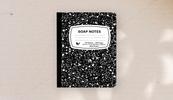4 Common SOAP Note Mistakes to Avoid

Consistent documentation of interactions with your clients and their progress is a vital aspect of treatment. However, note-taking after every session can be time-consuming, especially if you’re seeing many clients a day.
Fortunately, using the SOAP note format can save time and ensure you are capturing all the key information.
If you’re wondering how to write SOAP notes, we’ve got you covered.
First off, here’s a detailed article on how to write a SOAP note, along with a list of SOAP note examples, to help streamline your note-taking process.
Additionally, you can dive in deeper to how to write the SOAP subjective section, what goes into the SOAP assessment section, how to write the SOAP objective section, and what goes into the SOAP plan section.
All that said, take care to avoid these four common SOAP note mistakes.
First, what’s a SOAP note?
The Subjective, Objective, Assessment, and Plan (SOAP) note is a widely used documentation method for healthcare providers. SOAP notes offer a structured, standardized way for you to take notes after each session, so that it’s easier for you to track your clients’ progress over time. Plus, it makes it easier to collaborate with other providers when needed.
Since all SOAP notes follow the same structure, all your information is clearly laid out in digestible parts, making it easy for any provider—including yourself—to read the note at a later date and know exactly what’s going on in a client’s treatment plan.
SOAP note mistakes to avoid
These notes should be brief, focused, informative, and always in the past tense. As you write more notes, you’ll find a system that works for you. However, there are some regular mistakes providers make when writing SOAP notes.
Here are four of the most common SOAP note mistakes, and what you can do to avoid them.

SOAP note mistake #1: Avoid unsourced opinions in the subjective section
S=Subjective section: In the subjective section, describe the subjective reporting of your clients (or others reporting on the client). This reporting can include their mood, their reported symptoms, their efforts since the last meeting to implement any homework or recommendations you provided, or questions they bring in.
Example: Client reported great motivation and willingness to participate. He had completed his homework and said, “I’m ready to work even harder today.” Client’s mother stated that he was excited to come to therapy today and that he had slept well the past few nights. Mother also stated that she had completed the at-home exercises with him every day this week, and she feels that this is building his confidence to work even harder.
What to avoid: Do not include opinions that are unsourced. In the example above, just stating “client was willing to participate” would simply be an opinion—and it’s not clear whose opinion—until you provide the statements attributed to the client and his mother that support that observation.
SOAP note mistake #2: Avoid statements without supporting data in the objective section
O=Objective section: The objective section is where you document your observations of client behavior, the specific interventions utilized in session, client responses to those interventions, and measurable outcomes related to your client’s performance, including test scores, percentages for any goals worked on, and other quantitative information.
Example: Produced /ch/ correctly in 17/25 (68%) initial sentences without any cues.
What to avoid: Do not include general statements without supporting data. Something like “client responded well to non-verbal cues” would be an impression of the session and calls for more specificity. When discussing specific clinical interventions, the intention of the intervention—and its connection to the larger treatment plan—should be clear. This generally means avoiding verbs like “discussed” or “explored,” as it’s not inherently clear what the purpose of such discussion or exploration would be.
SOAP note mistake #3: Avoid rewriting something already stated in assessment section
A=Assessment Section: Use the assessment section to describe your analysis, interpretation of the session, and your client’s progress toward the goals defined in the treatment plan. Document strengths and areas of improvement, and compare performance to previous sessions.
Example: Client’s progress on the /ch/ production objectives improved from 50% accuracy in the last session to 80% accuracy using visual cues. Without the use of visual cues, performance decreased significantly.
What to avoid: Do not rewrite what has already been stated in the Subjective or Objective sections. This is where you step back and look at the client’s progression or regression over time and assess what factors attribute to this change.
SOAP note mistake #4: Do not rewrite entire treatment plan—focus on next steps
P=Plan Section: Create an outline of immediate next steps in your client’s treatment. State all activities, objectives, or reinforcements that you are changing. If your client doesn’t continue to make the same progress, then consider a new plan to get closer to their goal.
Example: Continue working on final consonants and remove all cueing during the /ch/ activity to see if successful production of the sound can be maintained. (If you’re not making any changes, you can write something like “continue current treatment activities.”)
What to avoid: Do not rewrite your entire treatment plan. Your client’s goal is already outlined in your treatment plan, and this section is where you should be specific about what your immediate next steps are to get your client closer to achieving that goal. Based on your assessment of the client’s progression, this is where you would adjust cues if needed.
Make your documentation easier
While taking notes sometimes feels like just one more thing you have to fit into your day, it’s a critical part of private practice. Accurate record-keeping is an important part of running a practice. Notes provide you with a framework for later evaluation and clinical consideration.
The SOAP note template is an effective way to take notes quickly, so you can get all the relevant information down on paper without spending too much time away from your clients.
How SimplePractice streamlines running your practice
SimplePractice is HIPAA-compliant practice management software with booking, billing, and everything you need built into the platform.
If you’ve been considering switching to an EHR system, SimplePractice empowers you to run a fully paperless practice—so you get more time for the things that matter most to you.
Try SimplePractice free for 30 days. No credit card required.
More Stories
Stay inspired
Get the latest stories from your peers right to your inbox.










